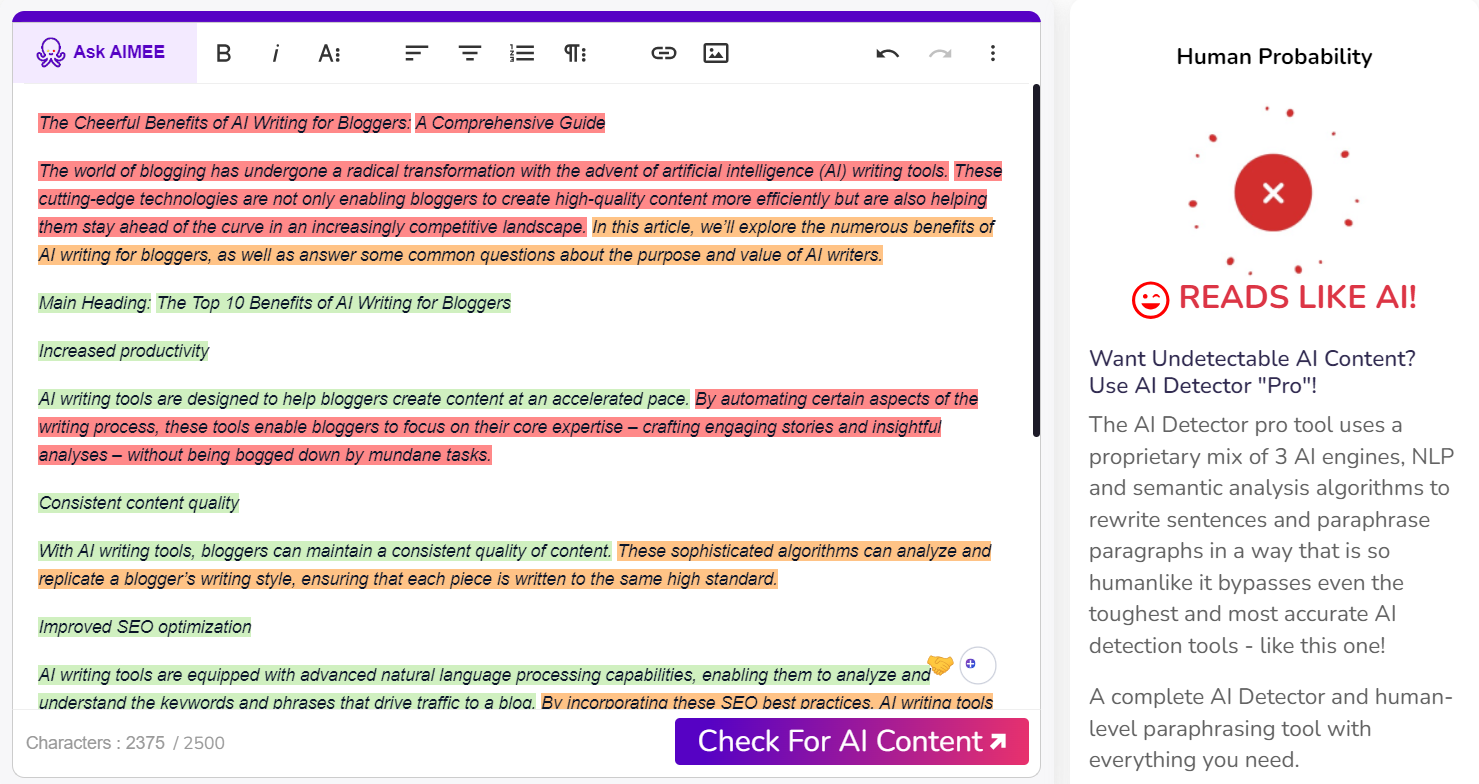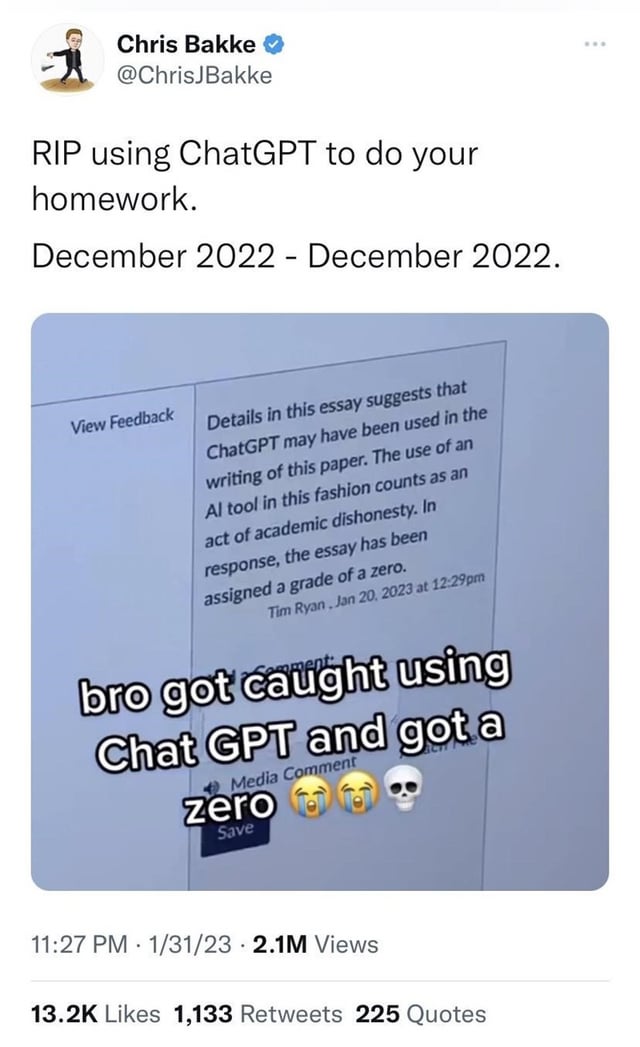Canvas does not directly detect ChatGPT or any specific AI tool. It can flag unusual activity or plagiarism.
Canvas is a widely-used learning management system (LMS) for educational institutions. Educators use it to manage course materials, assignments, and exams. While Canvas itself doesn’t have built-in detection for AI tools like ChatGPT, it integrates with plagiarism detection software. These tools analyze text for originality and unusual patterns.
Students using AI-generated content may risk being flagged for plagiarism. It’s crucial to understand academic integrity policies. Always ensure submitted work is original and properly cited. Using AI responsibly can enhance learning without compromising ethical standards. This approach helps maintain trust and credibility in academic environments.

Credit: www.wikihow.com
Understanding Canvas
Canvas is a widely-used learning management system (LMS) that helps educators manage digital learning. It offers various tools and features that make online education easier and more effective. Understanding Canvas can help you make the most of its capabilities.
What Is Canvas?
Canvas is a cloud-based LMS designed to simplify teaching and learning. It supports various educational activities, from course creation to student assessments. This platform is used by schools, universities, and other educational institutions worldwide.
Canvas offers a user-friendly interface that is accessible via web and mobile apps. It integrates with many third-party tools, providing a flexible and customizable learning environment.
Features And Capabilities
Canvas comes packed with numerous features that enhance the learning experience. Below are some of its key capabilities:
- Course Management: Easily create and manage courses.
- Communication Tools: Includes messaging, announcements, and discussion forums.
- Assignment Submission: Students can submit assignments online.
- Grading: Integrated gradebook for easy tracking of student performance.
- Quizzes and Surveys: Create assessments to gauge student understanding.
- Collaboration: Group projects and peer reviews are supported.
- Mobile Access: Available through iOS and Android apps.
- Analytics: Detailed reports on student engagement and progress.
The table below summarizes some of the core features of Canvas:
| Feature | Description |
|---|---|
| Course Management | Manage course content and structure. |
| Communication Tools | Facilitate student-teacher interaction. |
| Assignment Submission | Submit and review assignments online. |
| Grading | Track and report grades easily. |
| Quizzes and Surveys | Assess student knowledge and feedback. |
| Collaboration | Support for group work and peer reviews. |
| Mobile Access | Access courses on mobile devices. |
| Analytics | Insights into student engagement. |
Canvas is a comprehensive tool designed to meet the diverse needs of modern education. Its array of features ensures that both educators and students have a seamless and productive learning experience.
Chat Gpt Overview
In this section, we explore the capabilities of Chat GPT. We will look into its definitions and common uses. Understanding Chat GPT helps us to see its significance in modern technology.
Defining Chat Gpt
Chat GPT stands for Chat Generative Pre-trained Transformer. It is a type of AI language model developed by OpenAI. Chat GPT can generate human-like text based on the input it receives.
The model is trained using large datasets. These datasets include various text sources. As a result, Chat GPT can understand and generate coherent responses.
Chat GPT relies on deep learning techniques. These techniques help the model to learn language patterns. This makes it capable of creating meaningful conversations.
Common Uses
Chat GPT has many applications in different fields. Below are some common uses:
- Customer Support: Chat GPT can handle basic customer queries. It provides instant responses and improves customer experience.
- Content Creation: Writers use Chat GPT to generate ideas and content. It helps in writing articles, blogs, and social media posts.
- Education: Chat GPT can assist in tutoring. It answers questions and explains concepts to students.
- Entertainment: Chat GPT can create interactive stories and games. It engages users with interesting dialogues.
- Research: Researchers use Chat GPT to summarize articles. It also helps in finding relevant information quickly.
These are just a few examples. The potential uses of Chat GPT are vast and growing.
Detection Mechanisms
Canvas, an online learning platform, has advanced detection mechanisms. These mechanisms help ensure academic integrity. They can identify potential misuse of AI tools like Chat GPT. This section explores how these detection mechanisms work.
How Detection Works
Canvas uses multiple techniques to detect AI-generated content. One key method is plagiarism detection. Canvas compares submitted content against a database. This helps identify any copied text.
Canvas also analyzes writing styles. It checks for inconsistencies in student submissions. Sudden changes in writing style can signal AI use. Additionally, Canvas uses machine learning algorithms. These algorithms flag suspicious activity.
Types Of Detection Methods
There are several methods Canvas employs to detect Chat GPT. Here are the main types:
- Plagiarism Detection: Compares text to a database of sources.
- Writing Style Analysis: Monitors consistency in student writing.
- Machine Learning Algorithms: Uses AI to find patterns.
- Time Tracking: Tracks time spent on assignments.
These methods work together to ensure content authenticity. Below is a table summarizing these methods:
| Method | Description |
|---|---|
| Plagiarism Detection | Compares text to a database of sources. |
| Writing Style Analysis | Monitors consistency in student writing. |
| Machine Learning Algorithms | Uses AI to find patterns. |
| Time Tracking | Tracks time spent on assignments. |
Understanding these methods can help students maintain academic integrity. Canvas continuously updates its detection capabilities. This ensures it stays ahead of new AI tools.

Credit: contentatscale.ai
Canvas And Ai Detection
Canvas is a popular learning management system (LMS). Many educators use it for online teaching. With the rise of AI tools like Chat GPT, there’s curiosity about whether Canvas can detect such tools. This section explores Canvas’s capabilities and potential upgrades in AI detection.
Canvas’s Current Capabilities
Currently, Canvas offers various features for educators. These include assignment submissions, quizzes, and discussion boards. Canvas has some plagiarism detection tools like Turnitin. These tools help in identifying copied content. But, they do not specifically detect AI-generated text.
Canvas uses proctoring tools for online exams. These tools monitor student behavior during tests. They can flag suspicious activities. But, they do not directly identify Chat GPT use.
Potential Upgrades
There are possibilities for future upgrades in Canvas. These upgrades can enhance AI detection capabilities. Integrating advanced AI tools can help in identifying AI-generated content.
Here are some potential upgrades:
- Enhanced plagiarism detection tools
- AI content analysis
- Real-time monitoring of submissions
Enhanced plagiarism detection tools can compare submitted text against known AI-generated texts. AI content analysis can identify patterns typical of AI writing. Real-time monitoring can flag suspicious submissions instantly.
These upgrades can make Canvas more robust. They can help educators maintain academic integrity in the era of AI.
Real-world Scenarios
Understanding how Canvas interacts with ChatGPT in real-world scenarios is crucial. Let’s explore some case studies and user experiences. This will help us grasp the practical implications better.
Case Studies
Institutions and educators have shared their experiences with Canvas and ChatGPT. These case studies provide valuable insights.
| Institution | Scenario | Outcome |
|---|---|---|
| University A | Using ChatGPT for student queries | Improved response time |
| College B | Automated grading assistance | Enhanced grading efficiency |
| School C | Virtual tutoring sessions | Higher student engagement |
User Experiences
Real users have shared their experiences with Canvas and ChatGPT integration. These stories highlight both the benefits and challenges.
- Teacher X: “ChatGPT helps answer frequent questions quickly.”
- Student Y: “Canvas with ChatGPT makes learning easier and fun.”
- Admin Z: “Integration was smooth, but needed initial setup time.”
These experiences show that Canvas and ChatGPT can work together effectively. Users find the integration beneficial and time-saving.

Credit: contentatscale.ai
Ethical Considerations
As the use of AI tools like Chat GPT increases in academic environments, understanding the ethical implications becomes crucial. This section will explore the ethical considerations related to privacy concerns and academic integrity.
Privacy Concerns
Privacy is a major concern with AI tools. Chat GPT collects and processes data. This data can include personal information. Students and teachers should be aware of what data is collected.
Here are some key privacy issues:
- Data Collection: AI tools gather user interactions.
- Data Storage: Information is stored on servers. It’s not always clear where.
- Data Sharing: Data may be shared with third parties.
To protect privacy, use AI tools with clear data policies. Always read the privacy terms.
Academic Integrity
Academic integrity is vital in education. AI tools can challenge this. Students might use Chat GPT for assignments.
Here are some integrity issues:
- Plagiarism: Students might submit AI-generated content as their own.
- Cheating: AI can be used to get answers during tests.
- Fairness: Not all students might have access to AI tools.
Teachers should set clear guidelines. Encourage students to use AI responsibly. Foster a culture of honesty and fairness.
Future Outlook
The future of Canvas detecting Chat GPT holds great promise. As technology advances, Canvas aims to enhance its capabilities. This section explores what lies ahead.
Technological Advancements
Technological advancements will play a crucial role in Canvas’s ability to detect Chat GPT. AI and machine learning will become more sophisticated. This will enable better detection of AI-generated content.
Canvas may use deep learning algorithms for improved accuracy. These algorithms can analyze patterns in text to identify AI-generated responses. The integration of natural language processing (NLP) can also help. NLP can differentiate between human and AI-generated content more effectively.
Here is a table summarizing potential technological advancements:
| Technology | Impact |
|---|---|
| Deep Learning Algorithms | Improved accuracy in detecting AI-generated content |
| Natural Language Processing (NLP) | Better differentiation between human and AI text |
| Machine Learning | Enhanced detection capabilities |
Impact On Education
The ability to detect Chat GPT has significant implications for education. Accurate detection can ensure academic integrity. Students will need to produce their own work, leading to better learning outcomes.
Teachers can also benefit. They can focus more on teaching and less on policing. This fosters a better learning environment. Educational institutions can maintain high standards. They can ensure that students truly understand the material.
Here are some key impacts on education:
- Academic Integrity: Ensures students submit original work.
- Better Learning Outcomes: Students learn more effectively.
- Teaching Focus: Teachers can concentrate on teaching.
- High Standards: Maintains the quality of education.
Frequently Asked Questions
Can Chatgpt Be Detected In Canvas?
Canvas cannot directly detect ChatGPT. However, educators may identify AI-generated content through inconsistencies or specific writing styles. Always use AI responsibly.
Can Canvas Tell If You Copy And Paste From Chatgpt?
Canvas can’t directly detect if you copy-paste from ChatGPT. However, plagiarism detection tools can identify unoriginal content.
Can Canvas Detect Ai Writing?
Canvas cannot directly detect AI writing. However, plagiarism detection tools may identify AI-generated content. Always write original content to avoid issues.
Can Chatgpt Actually Be Detected?
Yes, ChatGPT can be detected using specialized AI detection tools. These tools analyze writing patterns to identify AI-generated content.
Conclusion
Canvas currently cannot detect Chat GPT usage directly. However, educators may notice unusual patterns or inconsistencies. Always use AI responsibly and ethically. Understanding the limitations and capabilities of Canvas can enhance your learning experience. Stay informed and ensure academic integrity in all your online activities.


Leave a Reply